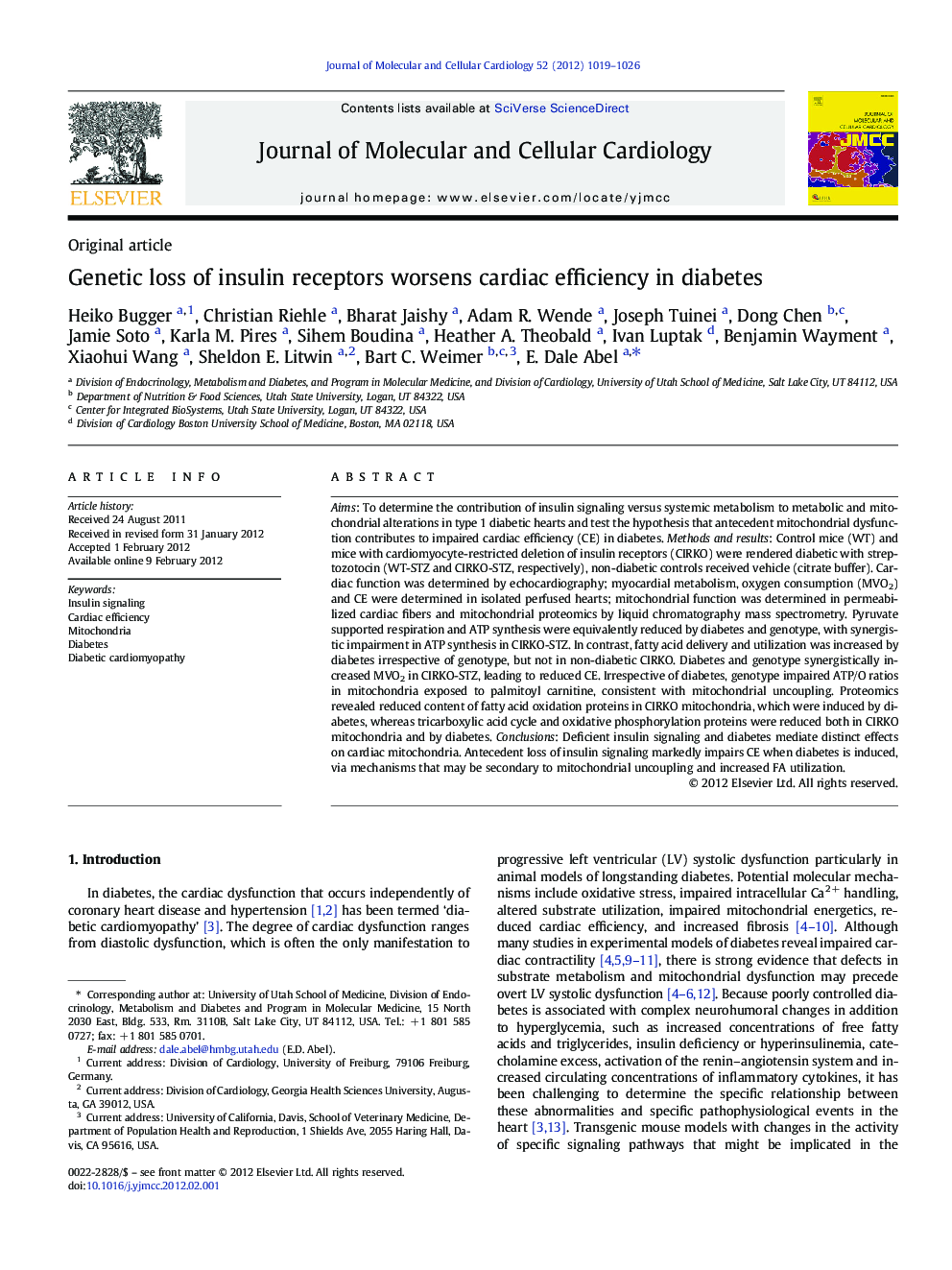| Article ID | Journal | Published Year | Pages | File Type |
|---|---|---|---|---|
| 2190684 | Journal of Molecular and Cellular Cardiology | 2012 | 8 Pages |
Aims: To determine the contribution of insulin signaling versus systemic metabolism to metabolic and mitochondrial alterations in type 1 diabetic hearts and test the hypothesis that antecedent mitochondrial dysfunction contributes to impaired cardiac efficiency (CE) in diabetes. Methods and results: Control mice (WT) and mice with cardiomyocyte-restricted deletion of insulin receptors (CIRKO) were rendered diabetic with streptozotocin (WT-STZ and CIRKO-STZ, respectively), non-diabetic controls received vehicle (citrate buffer). Cardiac function was determined by echocardiography; myocardial metabolism, oxygen consumption (MVO2) and CE were determined in isolated perfused hearts; mitochondrial function was determined in permeabilized cardiac fibers and mitochondrial proteomics by liquid chromatography mass spectrometry. Pyruvate supported respiration and ATP synthesis were equivalently reduced by diabetes and genotype, with synergistic impairment in ATP synthesis in CIRKO-STZ. In contrast, fatty acid delivery and utilization was increased by diabetes irrespective of genotype, but not in non-diabetic CIRKO. Diabetes and genotype synergistically increased MVO2 in CIRKO-STZ, leading to reduced CE. Irrespective of diabetes, genotype impaired ATP/O ratios in mitochondria exposed to palmitoyl carnitine, consistent with mitochondrial uncoupling. Proteomics revealed reduced content of fatty acid oxidation proteins in CIRKO mitochondria, which were induced by diabetes, whereas tricarboxylic acid cycle and oxidative phosphorylation proteins were reduced both in CIRKO mitochondria and by diabetes. Conclusions: Deficient insulin signaling and diabetes mediate distinct effects on cardiac mitochondria. Antecedent loss of insulin signaling markedly impairs CE when diabetes is induced, via mechanisms that may be secondary to mitochondrial uncoupling and increased FA utilization.
► MVO2 increases and cardiac efficiency (CE) decreases in obese mice but not in T1DM. ► Cardiomyocyte KO of insulin receptors (CIRKO) reduces MVO2 and FA oxidation with aging. ► CIRKO mice exhibit mitochondrial dysfunction. ► Hyperglycemia in CIRKO mice dramatically increases MVO2 and reduces CE. ► Antecedent mitochondrial dysfunction predisposes to reduced CE with diabetes.
